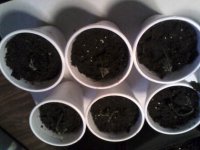Dready_jake
Member
That would be a game changed definitely. Because the chemical treatments it does happen in one treatment. the main part of my job for a little while was eradication and prevention of mites. They build up the resistance to chemicals because the ones that survive are resistant so the majority of the offspring even if its from one mite will have that same resistance. Therefore instant resistance to one mode of action.
Now this type of mode of attack is very intriguing as its organic and safe for us and pets right? Especially if they cannot build a resistance like most other modes if action. Thanks for the info!
Now this type of mode of attack is very intriguing as its organic and safe for us and pets right? Especially if they cannot build a resistance like most other modes if action. Thanks for the info!
Last edited:






